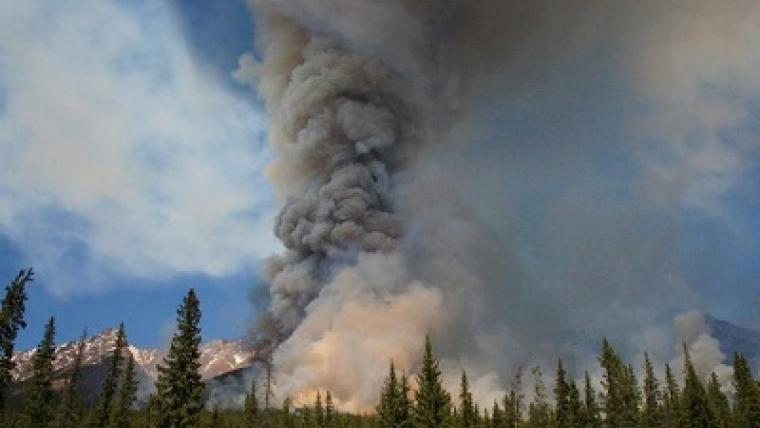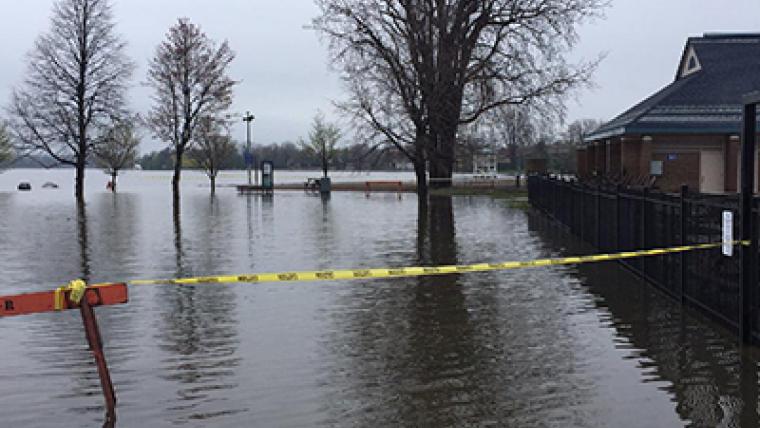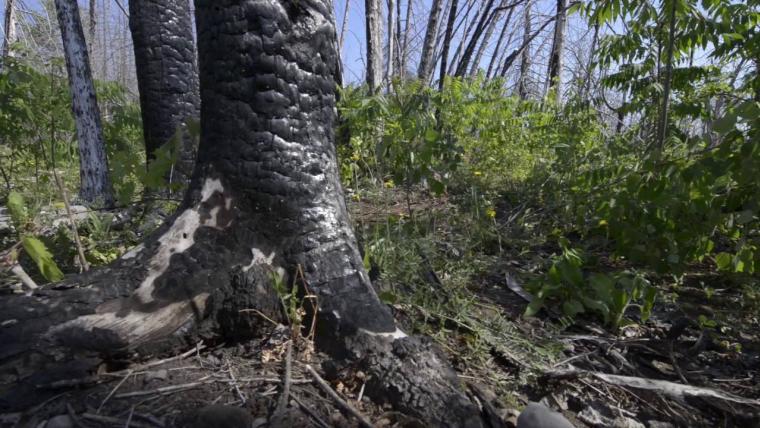Impact Of Climate Change On Forest Fires (AskNRCan)
On this episode of AskNRCan, Scientists Yan Boulanger and Sylvie Gauthier talk about how forest fire behavior and frequency are impacted by a changing climate.
Transcript
Joel Houle: Welcome everyone to Ask NRCan – our podcast series where we sit down with our experts to talk about an aspect of the work that we do here at Natural Resources Canada, or NRCan for short. Today, we’ll be talking about forest fires. Specifically, we’ll be asking ourselves the question “Is climate change having an impact on forest fires?”
Before we start, I just want to mention that we call this series Ask NRCan because we want to hear from you. The purpose of the show is to share with you not only the type of science that we do but also why we do it. So, at the end of the episode, if you have any questions on this topic, head to Twitter and tweet at us using the hashtag “#AskNRCAN”. Our experts will do their best to answer all relevant questions.
Sounds good? Ok, let’s do this!
[theme music]
Today, we are joined by Sylvie Gauthier and Yan Boulanger:, two research scientists from the Laurentian Forestry Centre in Sainte-Foy, Quebec. Sylvie and Yan, how are you?
Yan Boulanger: Hi!
Sylvie Gauthier: Good, yourself?
Joel Houle: Good, thank you. Let’s just dive right in. Can you explain to us the type of research that you do involving climate change and forest fires?
Yan Boulanger: Yeah, for sure. As you were mentioning, we’re looking at the impacts of climate change on the fire regimes all across Canada. You know, fire is really impacted by things like temperature, precipitation, drought, winds, and of course those parameters will change with the climate change that we will face in the next decade. We’re projecting an increase in temperature, a very small increase in precipitation. This increase will not compensate for the increase in temperature all across Canada. The conditions will be much drier and, of course, conducive to fire all across Canada. Our cities are projecting an increase in fire activity all across Canada, about two to four times than what we’re experiencing right now. Because the climate conditions will be much more conducive. Also, because the fire season will lengthen a lot from the spring and also in the fall in some places. So, we’ll see a great increase in annual burns all across Canada, especially in the boreal part of Canada.
Sylvie Gauthier: The impact of this change in fire regime will also impact the current harvesting levels across the country and will also impact the communities that live in the forest; particularly in the boreal forest, for the native and non-native communities are there. Also, a number of infrastructure and industries, for example the gas industry, the roads and the electricity power lines.
Joel Houle: Yan, you mentioned something earlier about a number of forest fires increasing across the country. Is that country-wide, or is there more a section of the country that is more susceptible to increased forest fires?
Yan Boulanger: We know that there are already some areas in Canada that are much more fire-prone than others. We can say that, for example, that Western Canada, especially the boreal part, is experiencing much more fires and much more area burn than the eastern part of Canada. With climate change, those regions, especially again in Western Canada, will experience greater increase in area burn. This will impact, as Sylvie was mentioning, the communities, but it will also impact the forest landscape and the forest age structure in this areas. We know that some tree species will be favoured with increased fire activity, like trembling aspen, white birch, jack pine, for example, in these areas, while other species will be much less important, like balsam fir. Also, because fire in these areas is much more common, of course if there’s more fire, the trees will be much younger in these regions. This will have a great impact on timber supply and on all of the forest sector.
Joel Houle: So, we’re talking about an impact on forest ecology as well as the lumber industry, the whole forest industry.
Sylvie Gauthier: As Yan was mentioning, the forest landscape will be younger. There’s also an impact on the amount of old forests that we will see in the landscape. There will be an impact on the biodiversity that’s using those old forests. Another thing that we see coming is that, with an increase in fire activity, on a local basis, the chances of seeing short fire intervals will increase. So, at the same place you’ll have higher chances of having two fires, let’s say, within 20 years. This will not leave enough time for the forest to reconstruct, for the bank of seeds to regenerate the forest. We may see a lot more regeneration failure than we thought. The forest will probably not be able to recover at the same density that we observed before the fire under those conditions. We can thereby see a move from a forest to a woodland ecosystem type or even to a prairie type. So those forecasts are particularly important for Western Canada but there are also regions in Eastern Canada, where these types of events are forecasted to become more frequent than they were in the past. Also, the communities that live in the boreal forest of the country do not necessarily realize that fire is part of the ecosystem. But with the increase that we foresee, it’s becoming more important to raise awareness about that fact and help communities to prepare for this type of risk.
Joel Houle: You touch on a very interesting subject, because I imagine those communities rely on the forest ecology, also the forest industry, and on top of that, the fire risks that are present. Do you work with some of these communities or other partners to conduct your research?
Sylvie Gauthier: In some regions, we do work with the industries or with the communities. Yan and myself, we don’t have partners across the country. But notably in the Quebec region, I do work with the forest industry, and I think Yan does some work with Hydro-Québec to look at the potential impact of such fires, either on the forest or on the infrastructure.
Joel Houle: Thank you so much, Yan and Sylvie, for taking the time to talk to us today. Before we go, if there’s some of our members of the audience that would like to have more information on the type of work that you do, is there a resource that you can direct them to?
Sylvie Gauthier: You could look at the forest change website of NRCan, where lots of information about the climate change that we forecast and also the climate that is conducive to fire is expressed. There’s also information about forecasts in terms of new fire regimes that we may expect across the country, with good maps where you can see at your own location, what are the forecasts for the next century.
Perfect! Thank you so much for your time today.
Yan Boulanger and Sylvie Gauthier: Thank you!
Joel Houle: So, this is the end of the episode, but it doesn’t mean that it’s the end of our conversation. If you have any followup questions for Yan and Sylvie, get on Twitter and tweet at us using the hashtag “#AskNRCan”.
Also, if you are interested in learning more about the scientific work that we do here at Natural Resources Canada, check out our online magazine called Simply Science. We have a ton of great content for you, including articles, videos and previous episodes of this podcast series. If you check out the podcast page for this episode, we’ll have links available to any relevant material so that you can learn more about forest fires.
The best way to find Simply Science is to either Google it or click on the banner from our website at nrcan.gc.ca.
And, as always, If you liked this episode and you are listening to us on Apple Podcast, Stitcher or SoundCloud , please consider subscribing so you can check out any previous or future episodes.
I think that’s it for us today. Thank you for listening! We look forward to hearing from you, and we’ll see you next time.
Page details
- Date modified:




